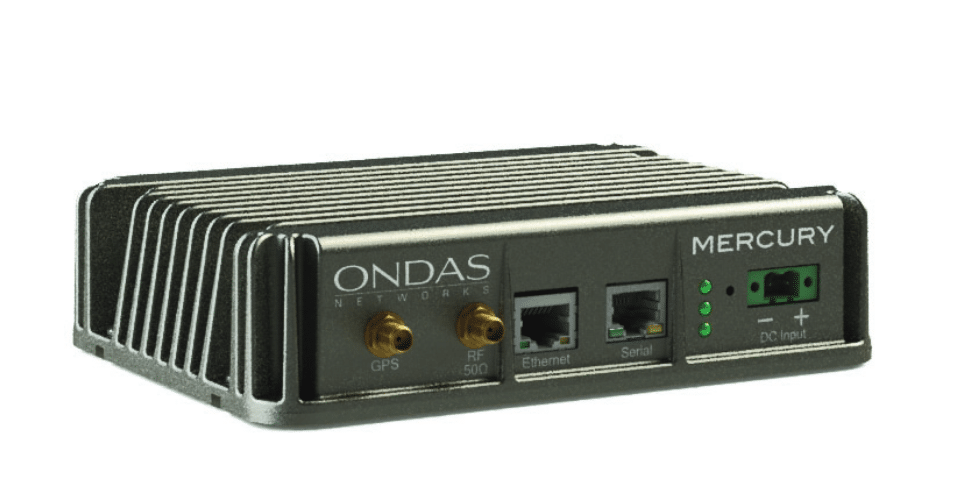Ondas Holdings announced the first commercial shipment of its Mercury software-based radio platform to a major North American Class I rail customer. Earlier this year, Siemens Mobility and Ondas Networks announced their exclusive partnership to bring a Siemens-branded portfolio of Ondas’ wireless radio communication systems to the North American rail market. The Mercury platform is the newest product introduction under that agreement.
The Mercury edge remote runs Ondas’ Mission-Critical IoT (“MC-IoT”) software for licensed narrowband frequencies. Ondas’ MC-IoT software platform offers the network operator the ability to aggregate multiple adjacent and non-adjacent narrowband channels into a greater data pipe in order to support both existing legacy and additional advanced applications. Mission-critical network operators, like railroads, electric utilities, oil & gas companies, public safety and defense companies currently run private networks over narrowband channels but are limited to very low bandwidths, often capped at serial modem data rates of 9,600 bits per second. These users are confronting a significant bandwidth gap for their advanced data applications located at the edge of their networks. Ondas’ MC-IoT software platform creates a secure, high-capacity, private “fog” network at the edge to enable these advanced applications with up to 15 times more capacity.
“Ondas’ MC-IoT software platform enables new advanced applications at the edge of major industrial networks,” stated Eric Brock, chairman and CEO of Ondas. “The Mercury platform, which we have shipped to one of our North American Class I rail customers, is a major step forward in the widespread adoption of industrial applications. It’s not only ground-breaking in terms of throughput but enables new levels of security in these critical markets. We believe Mercury has significant appeal across global critical infrastructure markets and expect further adoption in the near term.”
